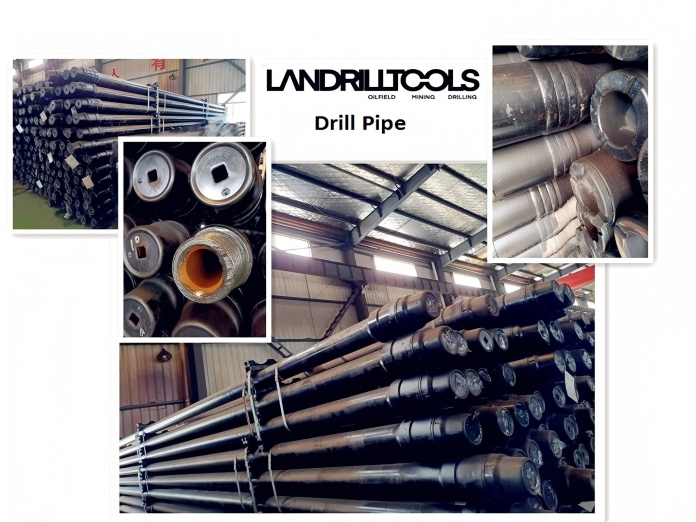In oil and gas drilling operations, the oil drill pipe is a core downhole component that connects the surface drilling rig to the downhole drill bit. Its performance directly determines the efficiency, safety, and success of well construction. 1.Drilling Through Formations
1.Drilling Through Formations
The oil drill pipe is the critical part linking the drill bit and the drilling rig. Through rotation and propulsion, it drives the drill bit to penetrate formations for underground oil resource extraction. The structural design and material selection of the oil drill pipe need to consider geological conditions, well depth and other factors to ensure the smooth progress of drilling operations.
2.Transmitting Drilling Fluid and Recovering Cuttings
During drilling, drilling fluid is delivered to the drill bit position via the oil drill pipe, which cools, lubricates and cleans the well bottom. Meanwhile, it carries broken cuttings from the well bottom to the wellhead. The oil drill pipe conveys drilling fluid to the drill bit through the inner channel of the pipe string, and then the fluid flows back along the outer wall of the pipe string to the wellhead, discharging solid waste out of the well.
3.Supporting and Transmitting Torque
When drilling through formations, the oil drill pipe must bear the rotational torque and propulsive force from the drilling rig, and transmit these forces to the drill bit to enable effective formation cutting. Therefore, the design of the oil drill pipe needs to take factors such as strength, rigidity and stability into account to prevent deformation or fracture during operation.
4.Directional Drilling Control
With the in-depth exploration of oil and gas resources and the continuous development of drilling technology, directional drilling has become an important part of conventional drilling operations. By manipulating downhole tools, the oil drill pipe can realize the rotation and inclination of the drill bit, thus enabling the drilling of different well types such as vertical wells, horizontal wells or deviated wells.
In conclusion, the oil drill pipe undertakes important roles in oil wells such as energy transmission, drilling fluid transmission, force bearing and support, torque transmission and directional control, which directly affect the efficiency and quality of oil well drilling. Therefore, in drilling operations, it is necessary to select appropriate oil drill pipes and their supporting tools according to different geological conditions and technical requirements to improve the efficiency and safety of drilling operations
Contact :May Ye
Mobile/Whatsapp:+0086-158 7765 8727
Email: landrill@landrilltools.com
Web: www.landrilltools.com
Post time: Sep-19-2025








 Room 703 Building B, Greenland center, Hi-tech development zone Xi’an, China
Room 703 Building B, Greenland center, Hi-tech development zone Xi’an, China
 86-13609153141
86-13609153141


